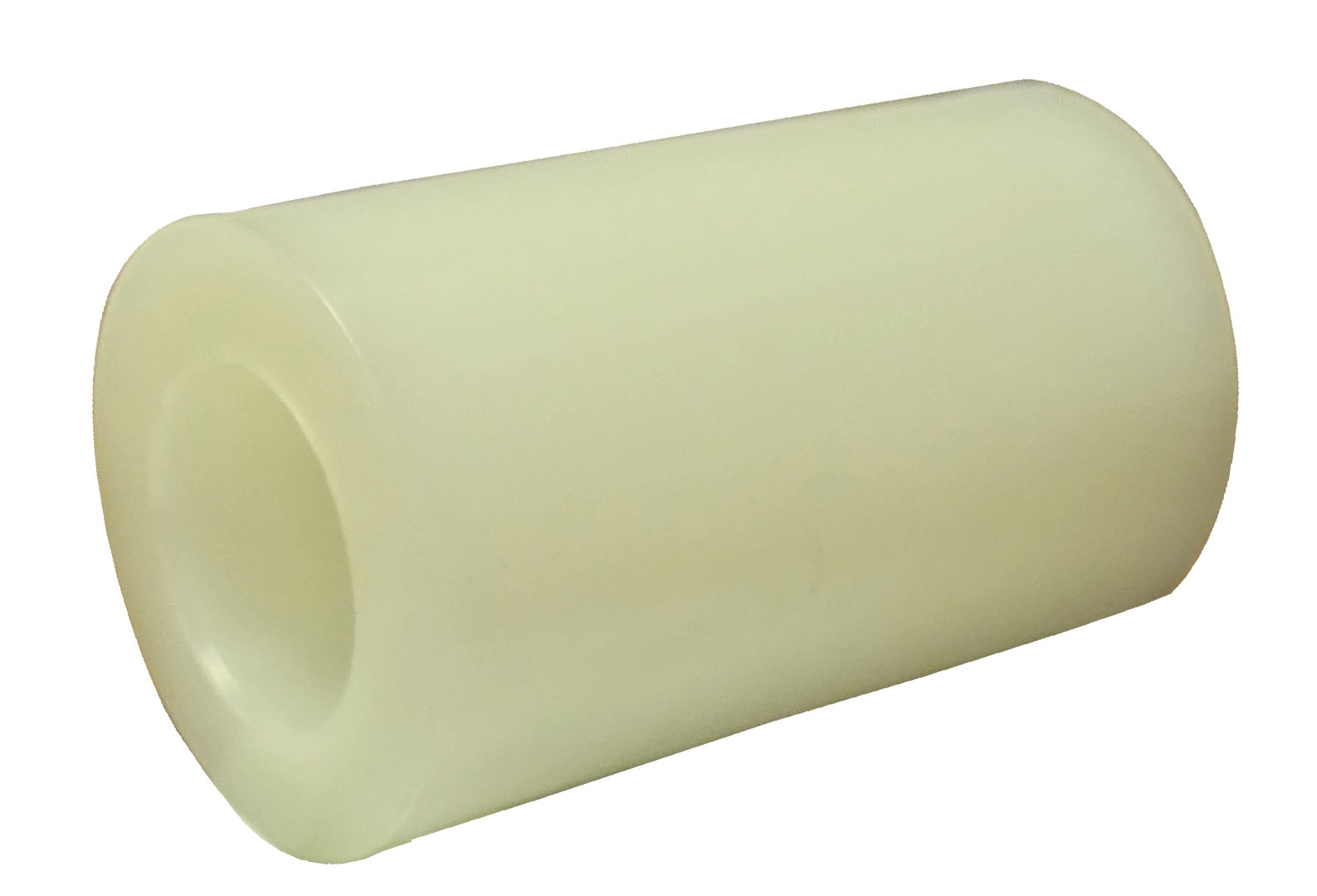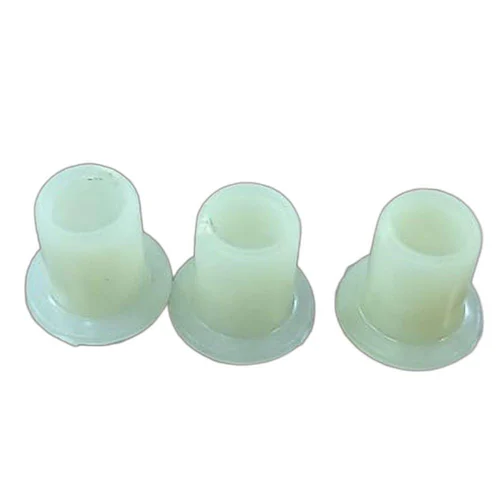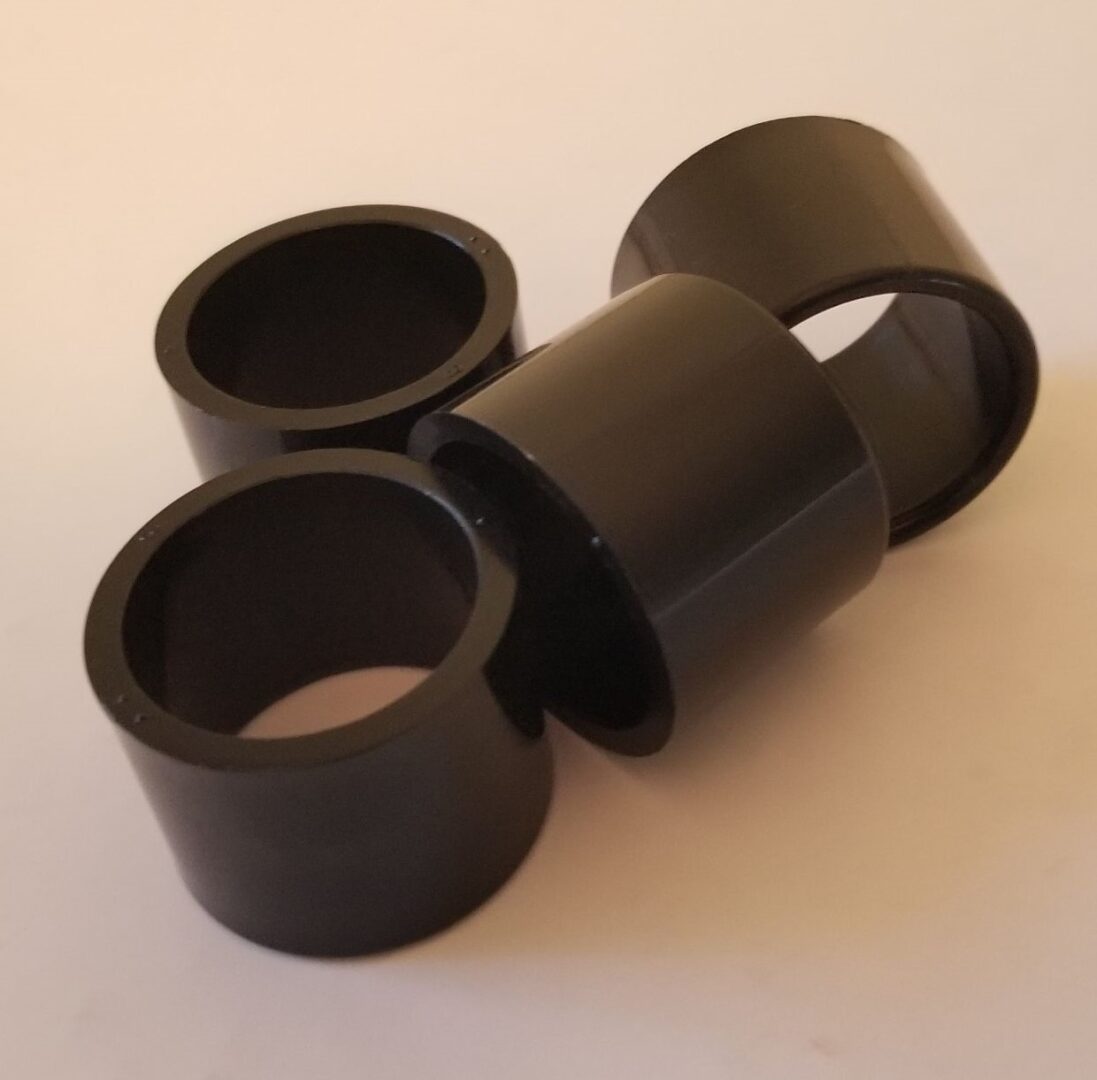
Can I get recommendations for plastic bushings suitable for use in food processing or pharmaceutical machinery?
Yes, recommendations for plastic bushings suitable for use in food processing or pharmaceutical machinery can be obtained. When selecting plastic bushings for such applications, it is crucial to consider factors such as material compatibility, regulatory compliance, hygiene requirements, and resistance to chemicals and cleaning agents. Here are some options to help you find suitable plastic bushings:
- Manufacturer Recommendations: Start by consulting manufacturers that specialize in producing plastic bushings for food processing or pharmaceutical applications. These manufacturers are knowledgeable about the specific requirements of these industries and can recommend bushing materials that comply with relevant regulations and standards. Contact their technical support teams or refer to their product documentation to obtain specific recommendations based on your application’s needs.
- Industry Associations and Standards: Industry associations and regulatory bodies in the food processing and pharmaceutical sectors often provide guidelines and standards for equipment components, including bushings. Examples include organizations like the Food and Drug Administration (FDA) for food processing or the International Society for Pharmaceutical Engineering (ISPE) for pharmaceutical machinery. Refer to their guidelines or consult with industry experts to identify recommended materials and specifications for plastic bushings.
- Specialty Suppliers: Look for specialty suppliers that focus on providing components for food processing or pharmaceutical machinery. These suppliers often have a range of plastic bushings specifically designed and certified for use in these industries. They can offer guidance on selecting bushings that meet the required standards and provide the necessary performance characteristics for your application. Search for suppliers that have experience serving the food processing and pharmaceutical sectors.
- Material Certifications: Certain certifications and approvals can indicate the suitability of plastic bushings for use in food processing or pharmaceutical machinery. Check if the bushing materials comply with regulations such as FDA 21 CFR, EU Regulation (EC) No. 1935/2004, or NSF/ANSI Standard 51. Material datasheets or manufacturer documentation should provide information about the certifications and approvals obtained for the bushing materials.
- Consulting with Experts: If you require more specialized or specific recommendations, consider consulting with experts in the field of food processing or pharmaceutical engineering. These experts can provide insights based on their experience and knowledge of industry-specific requirements. Engage with consultants, engineers, or professionals who have expertise in the selection of components for food processing or pharmaceutical machinery.
When evaluating plastic bushings for food processing or pharmaceutical machinery, it is essential to consider the specific operating conditions, such as temperature, moisture, and cleaning processes, as well as the mechanical loads and movements involved. Additionally, ensure that the selected bushings are compatible with the mating surfaces and other components in the machinery.
By utilizing these resources and considering the factors mentioned above, you can obtain recommendations for plastic bushings suitable for use in food processing or pharmaceutical machinery, ensuring compliance with industry standards and maintaining the integrity of your processes.

What are the common sizes and dimensions of plastic bushings, and how do I choose the right one for my application?
When selecting plastic bushings, it’s important to consider the appropriate sizes and dimensions to ensure compatibility with your application. Common sizes and dimensions of plastic bushings can vary depending on the specific industry and application requirements. Here’s some information to help you understand the common sizing aspects and guide you in choosing the right plastic bushing for your application:
- Inner Diameter (ID): The inner diameter refers to the measurement of the opening of the bushing, which corresponds to the shaft or pin it will be mounted on. It is crucial to select a plastic bushing with an inner diameter that matches the diameter of the shaft or pin in your application. Measuring the shaft or pin accurately will help you determine the appropriate inner diameter of the bushing.
- Outer Diameter (OD): The outer diameter refers to the measurement of the outside surface of the bushing. It corresponds to the bore or housing in which the bushing will be inserted. Ensure that the outer diameter of the plastic bushing matches the dimensions of the bore or housing to achieve a proper fit and alignment.
- Length: The length of the plastic bushing is the distance between the two ends of the bushing. It determines the amount of space occupied by the bushing within the application. Consider the available space and clearance in your application to select a plastic bushing with an appropriate length that fits without interference.
- Flange or Collar: Some plastic bushings may have a flange or collar at one end, which provides additional support or acts as a stopper. The presence of a flange or collar can affect the overall dimensions and installation requirements of the bushing. Determine if your application requires a bushing with a flange or collar, and consider the additional dimensions it adds to the overall size.
- Wall Thickness: The wall thickness of the plastic bushing refers to the thickness of the material between the inner and outer surfaces of the bushing. It plays a role in determining the strength and load-bearing capacity of the bushing. Consider the expected loads and forces in your application to select a bushing with an adequate wall thickness to handle the required load requirements.
In order to choose the right plastic bushing for your application, it is recommended to follow these steps:
- Identify the specific dimensions and requirements of your application, such as the required inner diameter, outer diameter, length, and any additional considerations like flanges or collars.
- Refer to the manufacturer’s documentation, catalogs, or product datasheets to identify plastic bushings that match your required dimensions and meet the performance criteria for your application.
- Consider the load capacity, speed limitations, temperature range, and other relevant factors specified by the manufacturer to ensure the selected bushing meets the performance requirements of your application.
- If necessary, consult with application engineers or technical experts who can provide guidance based on their experience and knowledge of plastic bushings.
- Procure a sample or a small quantity of the selected plastic bushing to test its fit, function, and performance in your specific application before proceeding with larger-scale implementation.
By considering the common sizes and dimensions of plastic bushings and following the selection process outlined above, you can choose the right plastic bushing that fits your application’s requirements, ensuring proper functionality and performance.

What are the key considerations when selecting plastic bushings for corrosive environments?
When selecting plastic bushings for corrosive environments, it’s essential to consider several key factors to ensure the longevity and performance of the bushings. Corrosive environments can pose significant challenges to materials, including degradation, chemical attack, and loss of mechanical properties. Here are the key considerations when selecting plastic bushings for corrosive environments:
- Chemical Compatibility: The first and foremost consideration is the chemical compatibility of the plastic material with the corrosive substances present in the environment. Different plastics have varying degrees of resistance to specific chemicals. It’s crucial to identify the types of corrosive chemicals, acids, bases, solvents, or other substances that the bushings will be exposed to and choose a plastic material that offers excellent resistance to those specific chemicals.
- Material Selection: Certain plastic materials are known for their superior chemical resistance properties. For corrosive environments, consider using plastic materials such as PTFE (Polytetrafluoroethylene), PVDF (Polyvinylidene Fluoride), PPS (Polyphenylene Sulfide), or ETFE (Ethylene Tetrafluoroethylene). These materials offer excellent resistance to a wide range of corrosive chemicals and can withstand harsh environments.
- Temperature Range: In addition to chemical compatibility, consider the temperature range of the corrosive environment. Some plastics may have temperature limitations and can degrade or lose their chemical resistance properties at elevated temperatures. Ensure that the selected plastic material can withstand the temperature range of the corrosive environment without compromising its performance or chemical resistance.
- Load and Wear Requirements: Evaluate the load and wear requirements of the application. Corrosive environments may involve abrasive particles or high loads that can accelerate wear and reduce the lifespan of the bushings. Select plastic materials that offer excellent wear resistance and can withstand the specific load conditions of the application.
- Sealing and Contamination: Corrosive environments often involve the presence of moisture, gases, or contaminants. Consider whether the bushings need to provide sealing properties to prevent ingress of corrosive substances or contamination. Some plastic bushings can be designed with additional sealing features to enhance protection against corrosive elements.
- UV and Weather Resistance: If the corrosive environment involves exposure to sunlight or outdoor weather conditions, consider the UV resistance and weatherability of the plastic material. Some plastics may degrade or experience color fading when exposed to prolonged sunlight or extreme weather conditions. Choose a plastic material that offers good UV resistance and weather resistance properties if applicable.
- Manufacturer Expertise: Work closely with manufacturers or suppliers who have expertise in providing plastic bushings for corrosive environments. They can offer guidance on material selection, design considerations, and provide specific recommendations based on their experience and knowledge of different plastic materials and their performance in corrosive environments.
It’s important to thoroughly assess the corrosive environment and consult with experts to ensure the right plastic material is selected for the bushings. Conduct compatibility tests, review material datasheets, and consider real-world application experiences to make an informed decision. Additionally, proper installation, regular inspection, and maintenance practices should be followed to maximize the performance and lifespan of the plastic bushings in corrosive environments.
By considering these key factors, you can select plastic bushings that are well-suited for corrosive environments, providing reliable and long-lasting performance even in the presence of corrosive substances.


editor by CX 2024-04-10